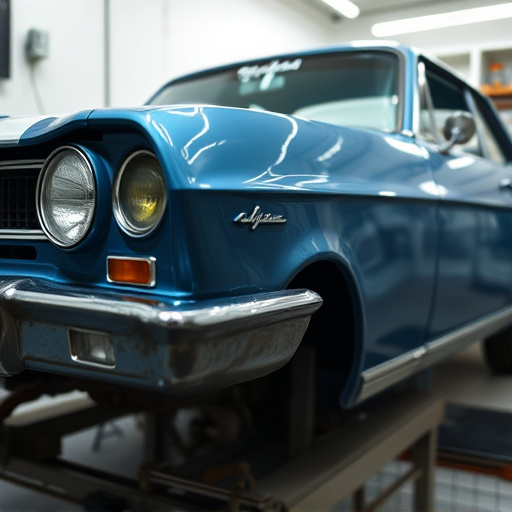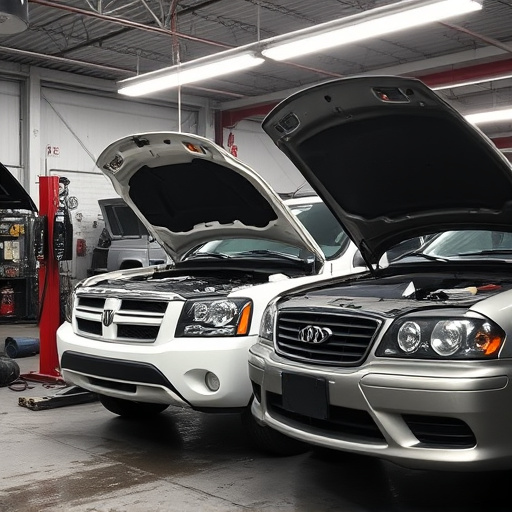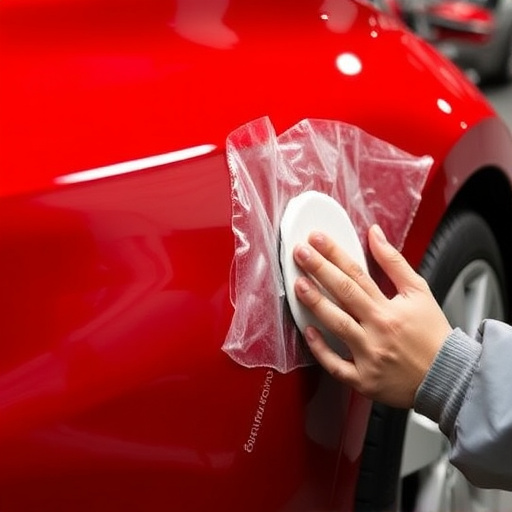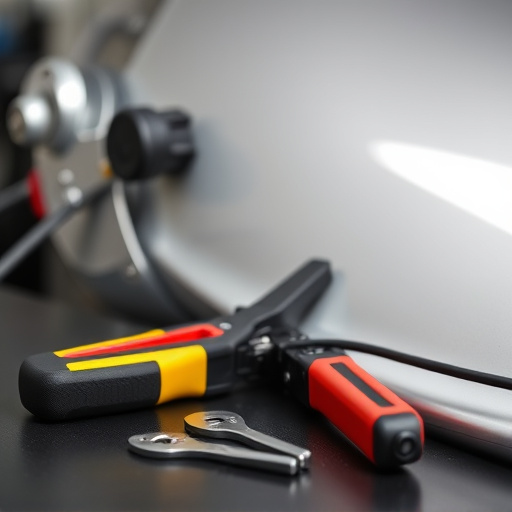To set up Tesla Sentry Mode, verify vehicle compatibility and use a high-speed USB drive (8GB or higher, formatted to exFAT). Professional auto body services are required for sensor/camera modifications. Prepare the USB with latest Tesla software and structured folders for camera feeds. Follow 4 steps: insert USB, configure settings, select recording preferences, test performance. This enhances vehicle surveillance, aiding insurance claims and collision repairs.
“Unleash the full potential of your Tesla with a comprehensive guide to setting up Sentry Mode using a USB drive. This powerful safety feature requires specific configurations, and our step-by-step process ensures an easy setup. We’ll walk you through understanding the essential requirements, preparing your USB drive, and configuring Sentry Mode effectively. By following this guide, you’ll be able to enhance your Tesla’s security and stay informed about its surroundings.”
- Understanding Tesla Sentry Mode Requirements
- Preparing Your USB Drive for Configuration
- Step-by-Step Guide to Setting Up Sentry Mode
Understanding Tesla Sentry Mode Requirements

To set up Tesla Sentry Mode correctly, it’s crucial to understand its requirements and your vehicle’s capabilities. Before starting the Tesla Sentry Mode setup with a USB drive, ensure your car is compatible with this advanced driver-assistance system (ADAS). Not all Tesla models or even specific years within a model line may support Sentry Mode, so checking compatibility is step one. Moreover, proper configuration necessitates a USB drive that meets certain standards; it should be a high-speed (at least 2 MBps) flash drive with enough storage space for the software and updates required by Sentry Mode.
The car body repair process involved in installing or upgrading Sentry Mode components must also be considered. Tesla vehicles are designed to accommodate these advanced safety features, but any modifications or adjustments to the car’s hardware—including sensors, cameras, and processors—should be handled by professional automotive repair services with experience in electric vehicle (EV) technology. This ensures not only accurate setup but also protects your warranty and prevents potential issues with auto body repair that could impact the system’s performance.
Preparing Your USB Drive for Configuration

Preparing your USB drive for a Tesla Sentry Mode setup is a crucial step that requires careful consideration. Begin by ensuring your USB drive meets the minimum requirements specified by Tesla, typically 8GB or higher, formatted to exFAT file system. This format guarantees compatibility with Tesla’s software and allows for efficient data transfer during the configuration process. Avoid using any auto repair services or third-party tools that claim to optimize USB drives, as these may introduce unwanted changes that could disrupt the Sentry Mode setup.
Next, gather all necessary files required for the Tesla Sentry Mode configuration. These include the latest version of Tesla’s software and specific folders containing the camera feeds and calibration data. Create a structured folder hierarchy on your USB drive to ensure seamless integration with Tesla’s system. Remember, proper preparation is key; by doing so, you’ll enhance the likelihood of a successful Tesla Sentry Mode setup and avoid any potential issues related to vehicle bodywork damage detection.
Step-by-Step Guide to Setting Up Sentry Mode

Setting up Tesla Sentry Mode is a straightforward process that allows drivers to enhance their vehicle’s security and surveillance capabilities. Here’s a step-by-step guide for an easy configuration:
1. Insert Your USB Drive: Start by inserting a compatible USB drive into your Tesla. Ensure the drive has sufficient storage space and is formatted appropriately (usually FAT32 or exFAT). This drive will be used to store video footage captured by Sentry Mode.
2. Access the Configuration Menu: Once inserted, your Tesla should automatically detect the new hardware. Navigate to the vehicle’s settings menu and locate the ‘Sentry Mode’ option. Here, you’ll find a prompt to configure the USB drive for Sentry Mode recording. Select this option and follow any on-screen instructions.
3. Select Recording Preferences: During setup, choose your desired video resolution, frame rate, and other recording parameters. Consider factors like battery life and storage capacity when making these choices. You can always adjust these settings later in the Sentry Mode menu.
4. Test and Verify: After configuration, test the system by initiating a Sentry Mode trigger (like setting off an alarm). Review the recorded footage on your vehicle’s display to ensure smooth operation and clear video quality. If adjustments are needed, return to the settings and tweak accordingly.
Remember that proper setup ensures optimal protection for your Tesla, much like how meticulous classic car restoration ensures a vehicle’s longevity. Similarly, in cases of automotive collision repair, having detailed records from Sentry Mode can be invaluable during insurance claims and repairs.
Setting up Tesla’s Sentry Mode with a USB drive is a straightforward process that empowers owners to enhance their vehicle’s security. By following this comprehensive guide, you can easily configure your car’s surveillance system, providing peace of mind while driving. Remember, a well-prepared USB drive is the key to unlocking advanced driver assistance features and ensuring your Tesla remains a cutting-edge, secure machine.














